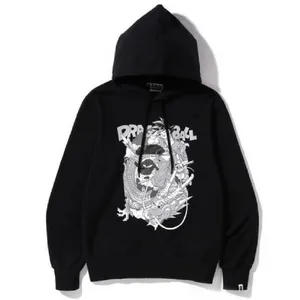
The purpose of wearing safety boots, gloves, masks and other PPEs (personal protection equipment) is to protect you against workplace hazards. PPEs made from different materials come in different sizes and for different settings. Choosing the wrong PPE can increase exposure to workplace hazards and injury risks. For example, when your shoes are too loose, they can easily slip on the slippery floor. Mens safety boots are crucial when you are working in industries like construction, manufacturing, chemical and more. So, let’s see how you can choose the best mens safety boots.
Understand Your Workplace Requirements
The first step in selecting the right safety boots is to understand the specific hazards of your workplace. Different industries come with different safety requirements. For example, construction workers are exposed to heavy equipment and materials, while factory workers may face slippery surfaces or electrical risks.
Safety boots are designed to protect against a wide range of hazards, including:
- Steel or Composite Toe Protection: For environments where falling objects are a concern.
- Slip Resistance: For workplaces with slippery floors or outdoor environments.
- Electrical Hazard Protection: For workers in electrical settings.
- Puncture Resistance: For jobs where stepping on sharp objects is a risk.
Understanding the risks will help you choose boots that meet your safety needs.
Prioritize Comfort
While safety is the most critical factor, comfort is equally important. You’ll likely be wearing your safety boots for long hours, so it’s essential to pick comfortable safety boots that provide support and reduce fatigue.
Look for boots that offer:
- Cushioned Insoles: These add extra comfort and reduce pressure on your feet.
- Breathable Materials: Boots made from materials that allow air circulation help prevent your feet from getting too hot or sweaty.
- Proper Fit: Too tight or loose boots can cause blisters or discomfort. Always check for the right fit to avoid issues affecting your productivity or well-being.
Some mens safety boots also offer features like memory foam insoles or gel inserts to enhance comfort.
Choose the Right Material
Safety boots are made of various materials, each with its own benefits. The material you choose should match your work environment and your required protection.
- Leather: Leather boots are durable and provide excellent protection. They are ideal for outdoor work or jobs that require long-term durability.
- Rubber: Rubber boots are often waterproof and great for wet or muddy environments. Workers in agriculture or construction commonly wear them.
- Synthetic Materials: Boots made from synthetic materials like nylon are lightweight, breathable, and comfortable, offering a great balance between safety and comfort.
Each material has pros and cons, so choose one that suits the specific needs of your job.
Look for Additional Safety Features
Depending on your job, you may require additional features in your safety boots. Some important ones to consider include:
- Waterproofing: Safety boots are essential to keep your feet dry and comfortable when working in wet conditions.
- Insulation: For cold work environments, insulated boots help keep your feet warm and prevent frostbite.
- Electrical Hazard Protection: For workers exposed to electrical hazards, boots with this feature offer an extra layer of protection by preventing electrical current from passing through to the ground.
- Shock Absorption: Boots with shock-absorbing soles reduce the impact on your joints when you walk or stand for extended periods.
These additional features are worth considering based on the specific demands of your work environment.
Check for Durability and Quality
Safety boots are an investment in your well-being, so choosing a pair that will stand the test of time is essential. Look for boots with reinforced stitching and durable soles that withstand rough terrain and heavy use.
High-quality safety boots are designed to be long-lasting, even under tough conditions. Although you might need to spend more upfront for a higher-quality pair, their durability and protection are worth the investment.
Consider Style and Design
While safety is the primary concern, there’s no reason why your safety boots can’t be stylish as well. Many manufacturers now offer safety boots in modern designs that can be worn on and off the job site.
Look for boots that fit well with your overall workwear and ensure they meet the safety standards required for your industry. Some brands offer boots that look like casual shoes but provide the same level of protection as more traditional work boots.
Know Your Size
A good fit is crucial for comfort and safety. Boots that are too tight cause blisters and reduce circulation, while those that are too loose cause instability and even trips or falls.
When shopping for safety boots for men, it’s a good idea to try them on with the socks you’ll be wearing while working. Pay attention to the fit around your toes and heel. Many safety boots also come with removable insoles, which can be replaced with custom orthotics.
Set a Budget
The price of safety boots can vary significantly depending on the brand, material, and features. While it’s important not to compromise on safety, you must also set a budget for your purchase. Generally, you can find good-quality boots at a reasonable price.
It’s worth investing in quality boots that will last longer, but if you’re on a tight budget, consider looking for sales or promotions.
Conclusion
Choosing the proper safety boots is a critical decision that impacts your workplace safety and comfort. You can make an informed choice by considering your workplace hazards, comfort, material, durability, and additional safety features. Remember, the right pair of boots will protect you and keep you comfortable throughout your workday. Always take the time to try on different options and find a pair that suits your specific needs so that you can focus on the job at hand with confidence.







